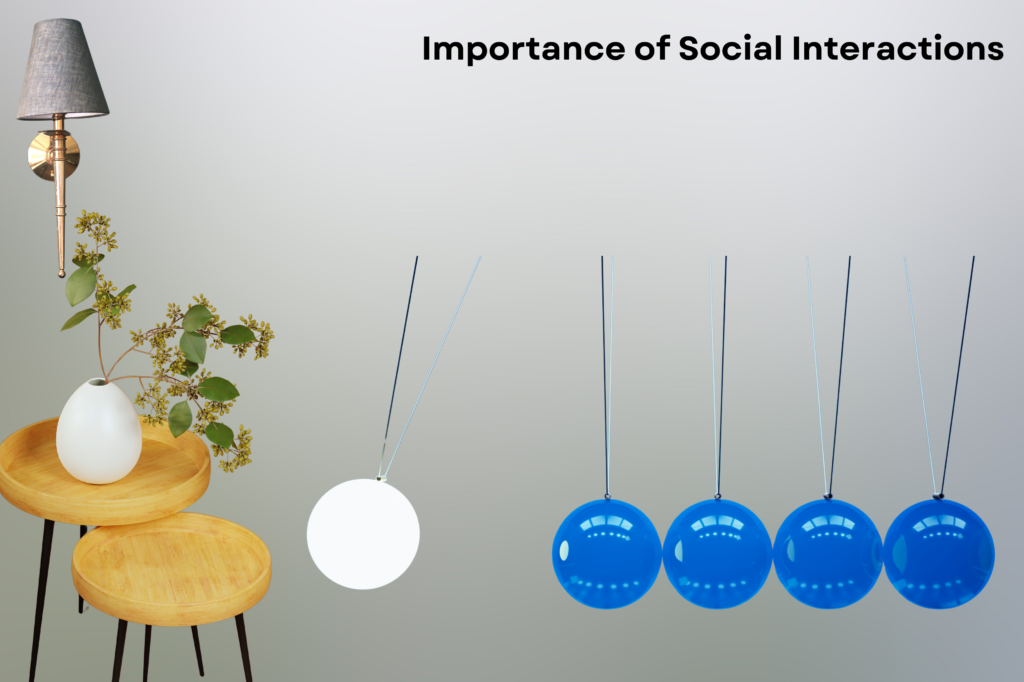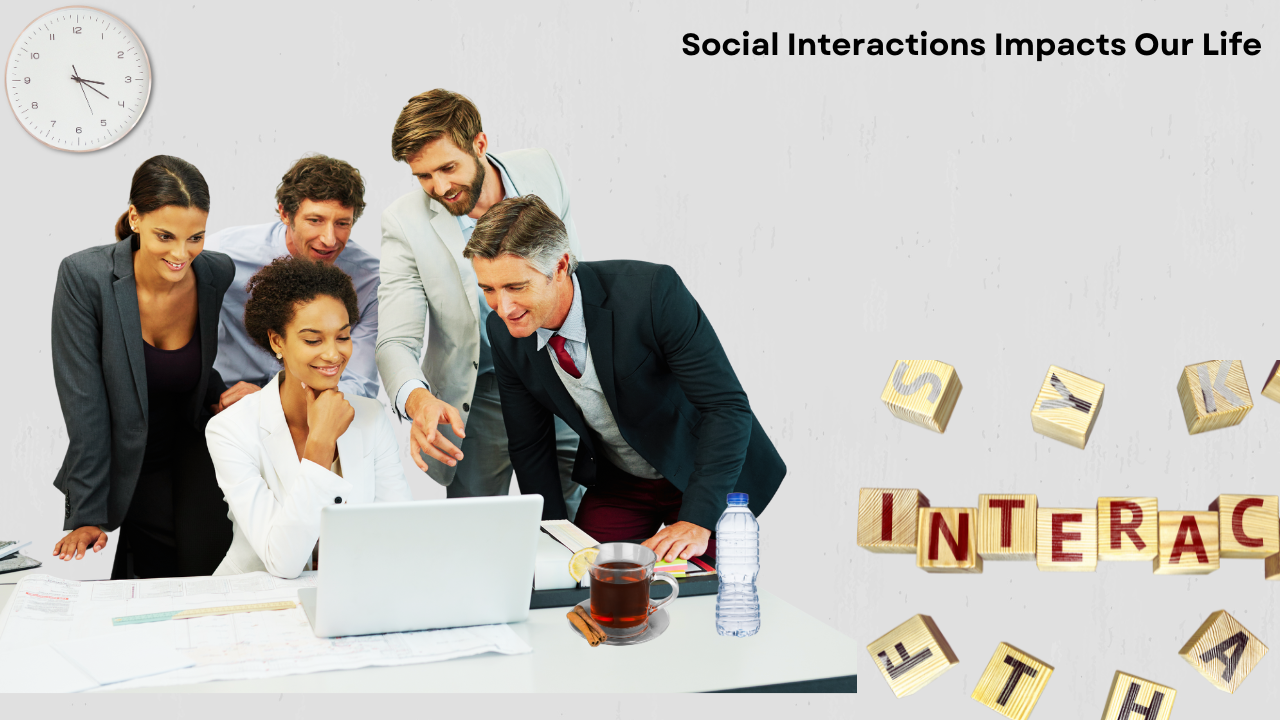It is important to get along with other people in life. It is how people talk, act, and connect in different social settings. Our culture is shaped by these exchanges, which also change how we act and help us grow. We need to know how people act toward each other to understand human culture.

The Importance of Social Interactions
Going out with others is a big part of making friends and getting to know them. People we work with, family, and friends can contact us through them. We show off how we look, talk about our feelings, and make friends this way. People will feel alone and taken out of the group if they avoid hanging out with others, and having it could make you feel lonely and hurt your mental health.
Types of Social Interactions
We talk to other people every day in several approaches. Some examples are talking, body language, group activities, and internet use. One form of verbal contact is talking. Nonverbal communication includes facial expressions, body language, and hand gestures. People talk to each other in groups at parties, meetings, and lessons. Social media sites and chat apps let people talk to each other online.
The Role of Culture in Social Interactions
How we treat each other is shaped by our society in a big way. It affects how we talk and act around others by shaping our actions, views, and social rules. People from different countries treat each other respectfully, speak to one another, and show how they feel in various ways. Some countries think looking someone in the eye is rude, while others see it as a sign of respect.
Social Norms and Expectations
People act in public based on social norms, which are rules we do not say out loud. These rules help us deal with others and tell us how to act in different situations. It would help if you were nice to people when you meet them for the first time. People are expected to behave in a certain way at certain times and places. It is known as social standards.
The Impact of Technology on Social Interactions
People now connect in many different ways than they did in the past. How we talk has changed because of text apps, social media, and video calls. It’s easier to talk to people thanks to technology, but it also has some drawbacks, like seeing people in person and reading their body language, which can cause mistakes.
Face to Face vs Online Interactions
When you meet someone in person, you can form stronger, more personal ties with them. We can look at facial expressions, body language, and how someone talks, which is very helpful for figuring out how they feel and what they need. On the other hand, online visits are easier to set up and allow us to talk to people from anywhere. Seeing each other might be more upsetting.
Social Roles and Interaction
Every person in society has different responsibilities. These jobs are given to them based on their place in society, such as parent, student, or worker. Some specific duties and expectations come with each job. Social exchanges help people play these roles by giving them chances to talk, work together, and make friends with people who play similar or different roles.
The Influence of Group Dynamics
Group dynamics are how people in a group deal with each other. Groups can be as small as a family or as big as a business. How people act, talk, and make decisions in a group is affected by how the group works. People in groups often change how they act to fit in with the group’s rules and expectations, which can change how they interact with each other generally.
Social Interaction in Public Spaces
Parks, roads, and markets are great places for people to meet and talk to each other. “Hi” or “Where are you going?” are common friendly things people say as they walk by. People can also learn how to do things publicly by watching others do them.
The Idea of Socialization
Through socialization, people learn the rules, beliefs, and behaviors that others expect of them. It starts when they are young and lasts their whole lives. Getting to know family, teachers, and others is a big part of making friends. Meet new people and make friends to learn more about yourself and how to act in different social settings.
The Role of Family in Social Interactions
When most people first meet new people, they join their family, which significantly affects how they connect with others. Children learn basic views, social norms, and how to speak to other people from their family. People who are close to family also get mental support, which makes them feel safe and like they belong. People get along better with each other later on because of these early talks.
Effects of Peers on Social Interactions
Peers also significantly affect how people connect, especially teenagers. People can try different social behaviors in peer groups and continue building their identities. People learn to work together, discuss, and settle disagreements by interacting with their peers. Negative interactions with peers can cause problems like bullying or peer pressure, while positive interactions can help kids learn how to get along with others.
Social Interaction in Educational Settings
Places where people learn, like schools, are great for making friends and meeting new people. Students learn engaging skills like how to work together, talk to others, and solve problems by interacting with their classmates, teachers, and staff. Within the school setting, individuals learn how important it is to be kind, follow the rules, and work together to complete tasks.
Social Interactions in the Workplace
Work is another great place to meet new people. People must deal with coworkers, bosses, clients, and others. You must communicate clearly, work as a team, and respect others to get along at work. Teams that get along with each other well can work better, finish more work, and be happy at work.
Social Interaction and Gender Roles
The way people connect is also affected by gender. Men and women may behave differently around other people because of the rules their society has developed. Gender roles say that women should care more than men, so men may seem more assertive in talks. In any case, these jobs are shifting. Relationships are less established in stone when it comes to gender roles these days, and anyone can get involved.
The Impact of Social Class on Interactions
A person’s social class can affect how they treat other people. Some people from different social groups may talk, act, and think in various ways. Better-off people may have faster access to things that help them associate with others, like things that help them learn new things and make connections. Social class can also change how polite someone is.
Conclusion
Every day, people talk to each other, and these conversations shape our identities, relationships, and culture. People have them in their homes, neighborhoods, at work, and in public places, among other places. Knowing how people interact with each other helps us make important links, work out our differences, and make society grow. It is important to stress empathy, communication, and respect to build good relationships in all parts of life.
